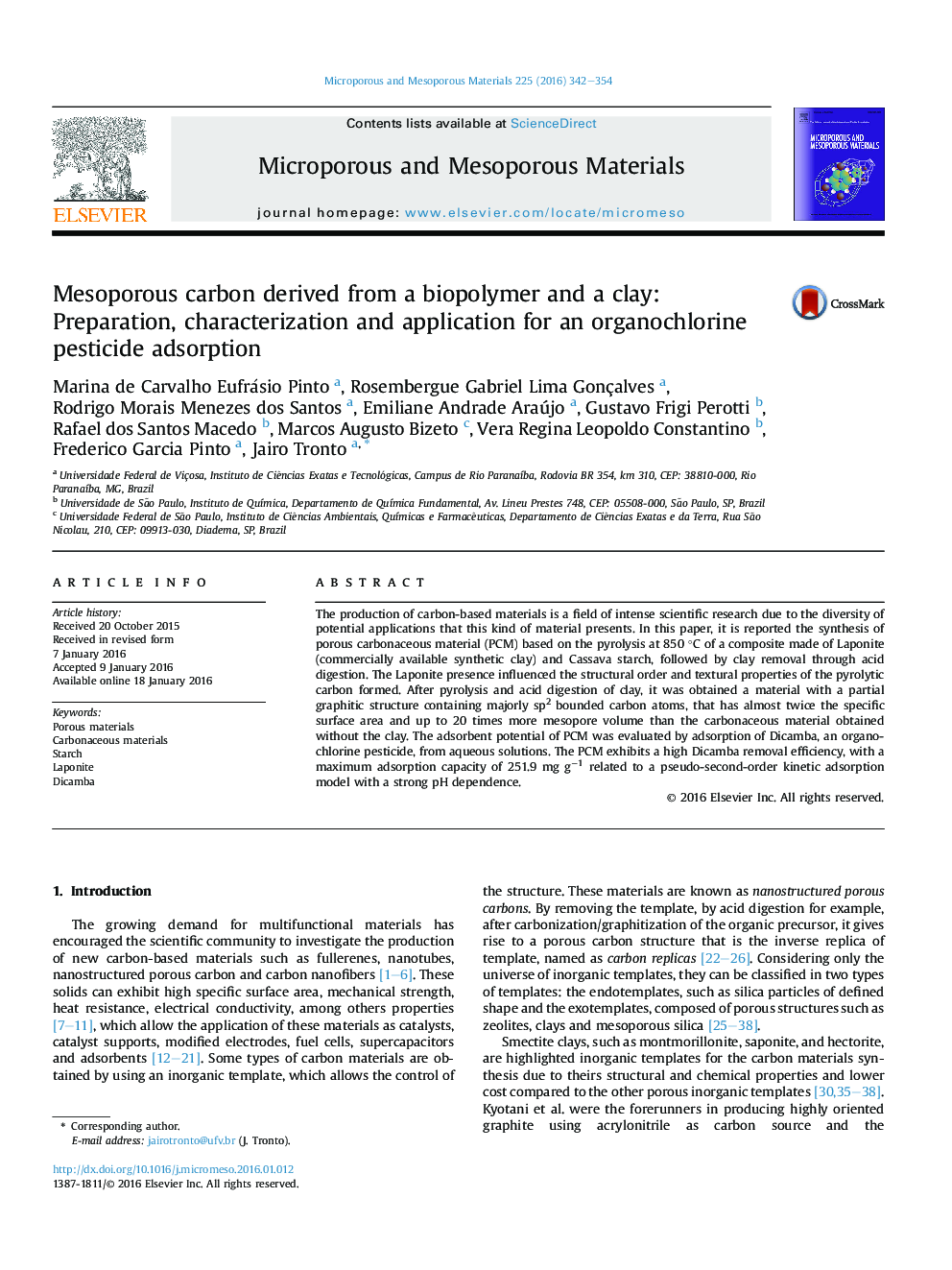| کد مقاله | کد نشریه | سال انتشار | مقاله انگلیسی | نسخه تمام متن |
|---|---|---|---|---|
| 72098 | 49011 | 2016 | 13 صفحه PDF | دانلود رایگان |
• A carbonaceous material (PCM) was synthesized based on a clay-starch composite.
• The mesoporous PCM material presents a total surface area of about 870 m2 g−1.
• The PCM potential as adsorbent was evaluated through Dicamba herbicide adsorption.
The production of carbon-based materials is a field of intense scientific research due to the diversity of potential applications that this kind of material presents. In this paper, it is reported the synthesis of porous carbonaceous material (PCM) based on the pyrolysis at 850 °C of a composite made of Laponite (commercially available synthetic clay) and Cassava starch, followed by clay removal through acid digestion. The Laponite presence influenced the structural order and textural properties of the pyrolytic carbon formed. After pyrolysis and acid digestion of clay, it was obtained a material with a partial graphitic structure containing majorly sp2 bounded carbon atoms, that has almost twice the specific surface area and up to 20 times more mesopore volume than the carbonaceous material obtained without the clay. The adsorbent potential of PCM was evaluated by adsorption of Dicamba, an organochlorine pesticide, from aqueous solutions. The PCM exhibits a high Dicamba removal efficiency, with a maximum adsorption capacity of 251.9 mg g−1 related to a pseudo-second-order kinetic adsorption model with a strong pH dependence.
Figure optionsDownload as PowerPoint slide
Journal: Microporous and Mesoporous Materials - Volume 225, 1 May 2016, Pages 342–354
